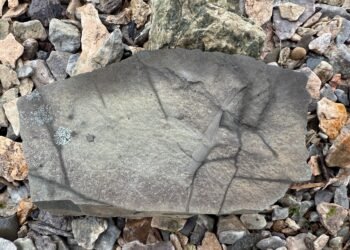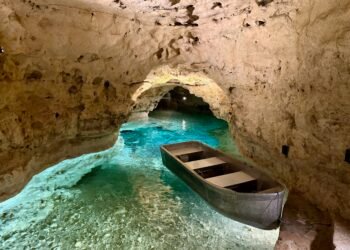For years, I dreamed of seeing Neuschwanstein Castle – King Ludwig II’s fairy-tale masterpiece high in the Bavarian Alps. But when I finally stood before it, I discovered a story far older than the 19th century – one written in limestone that once formed an ancient coral reef, in mountains born of colliding continents and sculpted by glaciers over the eons.
1 The Journey to a Fairytale Ridge
It was still early when my train pulled out of Munich, but I couldn’t sit still. For years, Neuschwanstein Castle had lived in my imagination – that perfect vision of turrets, mist, and mountain air that seems too dreamlike to exist. I’d first encountered it not in Germany, but on my living room table, piece by piece, as I assembled a jigsaw puzzle of the castle years ago. Each stone in that puzzle hinted at a story I longed to see in person.
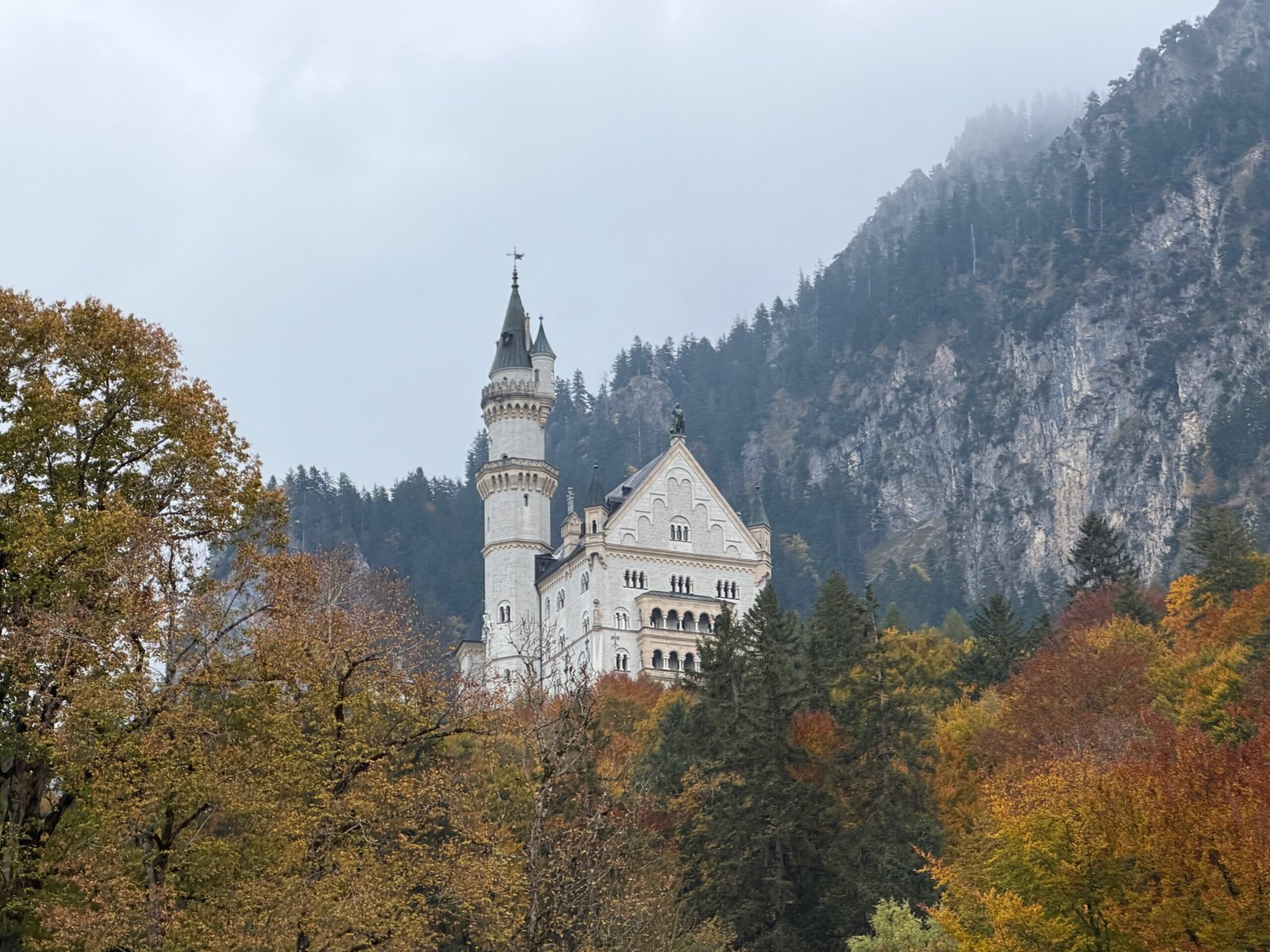
Three hours later, the train curved through the Bavarian countryside toward the little town of Füssen – gateway to the Alps. From there, a short bus ride carried me through pastures and forests until, suddenly, the castle appeared on a distant ridge – pale white against the colourful autumn leaves and dark green hue of the surrounding mountains, as if conjured from imagination itself.
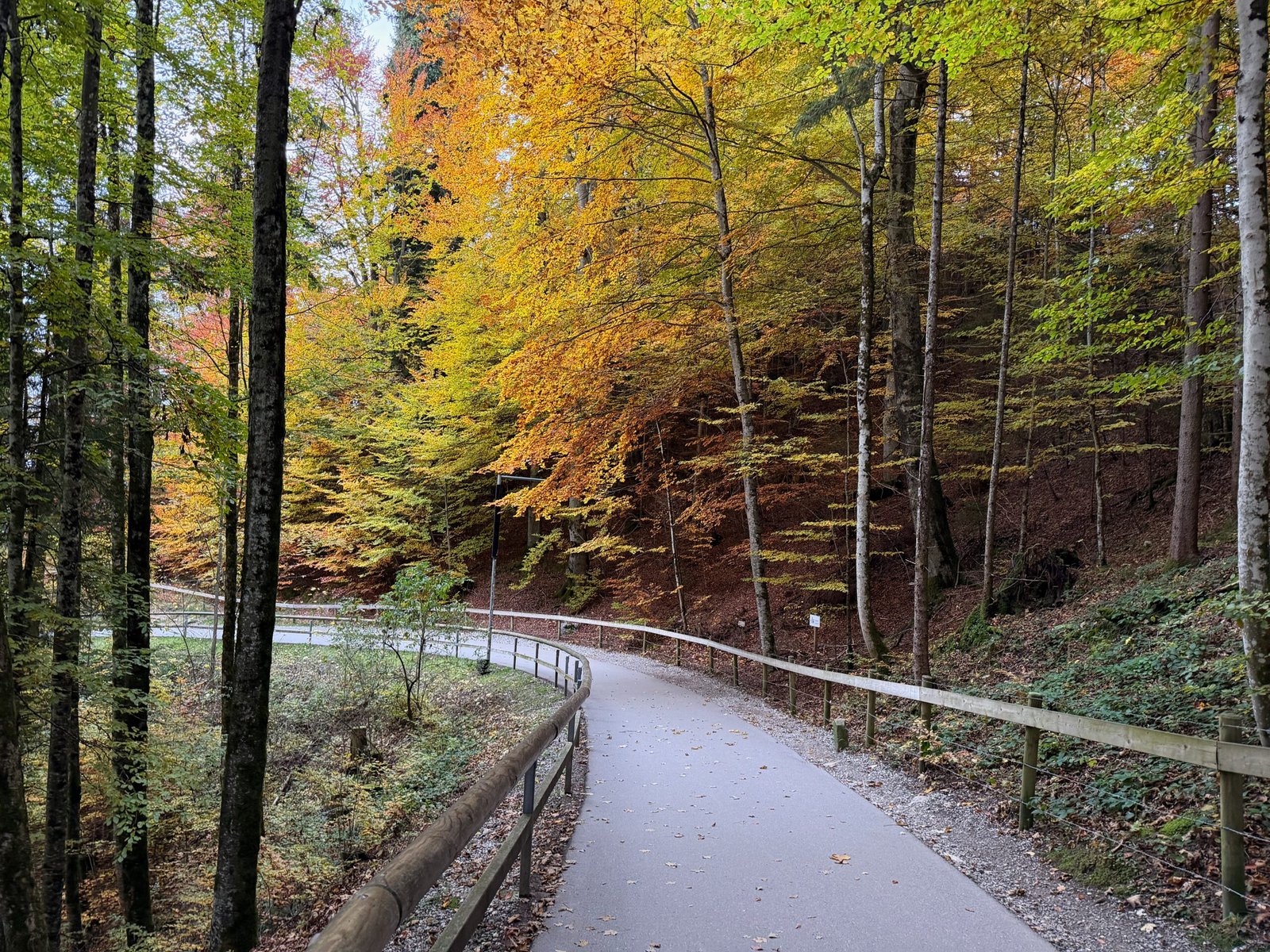
The path to the castle climbs gently through a forest of beech and spruce. The air smelled of damp leaves and limestone dust, and every turn revealed glimpses of the Lech River valley and Forggensee, glittering in the sun. It’s easy to see why King Ludwig II chose this place to build his dream. But what fascinated me most was what lay beneath that dream – the very stone it stands on.
2 Quick Facts About the Neuschwanstein Castle
- Location: Near Füssen, Bavaria, Germany
- Built: 1869 – 1886 by King Ludwig II of Bavaria
- Construction Material: Jurassic limestone formed from ancient coral reef deposits
- Formation age: ~200 million years
- Landscape shaped by: Glaciers during the last Ice Age (~20,000 years ago)
- Hiking Trail: 30 minutes from Hohenschwangau to the castle; +15 minutes to Marienbrücke
3 A Castle Built from a Lost Ocean
As I climbed higher, I began to notice the rock exposed along the trail — layers of pale grey limestone, streaked with fossil fragments. This wasn’t ordinary mountain stone. It was born long before the Alps existed, when this part of Europe lay beneath a warm, shallow sea teeming with coral reefs and marine life.

Roughly 200 million years ago, during the Jurassic period, countless coral colonies and shell-building creatures thrived in those tropical waters – a landscape much like today’s Bahamas or the Maldives, where reefs and lagoons built vast platforms of limestone. Over time, their skeletons accumulated on the seafloor, compacting into stone that would one day form the Northern Limestone Alps.
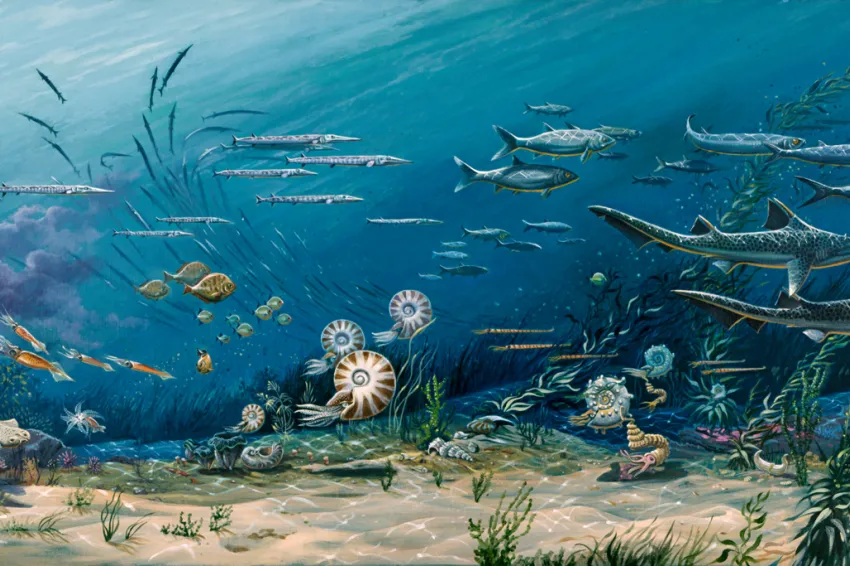
When the African and Eurasian tectonic plates collided about 30 million years ago, that ancient seafloor buckled and rose, creating the Alps and the very ridge where Neuschwanstein now sits. The collision was part of a vast mountain-building episode known as the Alpine orogeny – a slow, powerful process that folded and uplifted layers of limestone thousands of metres high, transforming an ancient tropical seabed into the jagged peaks of Europe.

Much later – during the last Ice Age, vast glaciers sculpted this region, carving the valleys and gorges that surround the castle today. The Pöllat Gorge below was once filled with ice that ground through the limestone, shaping the cliffs and leaving behind the dramatic landscape we see now.
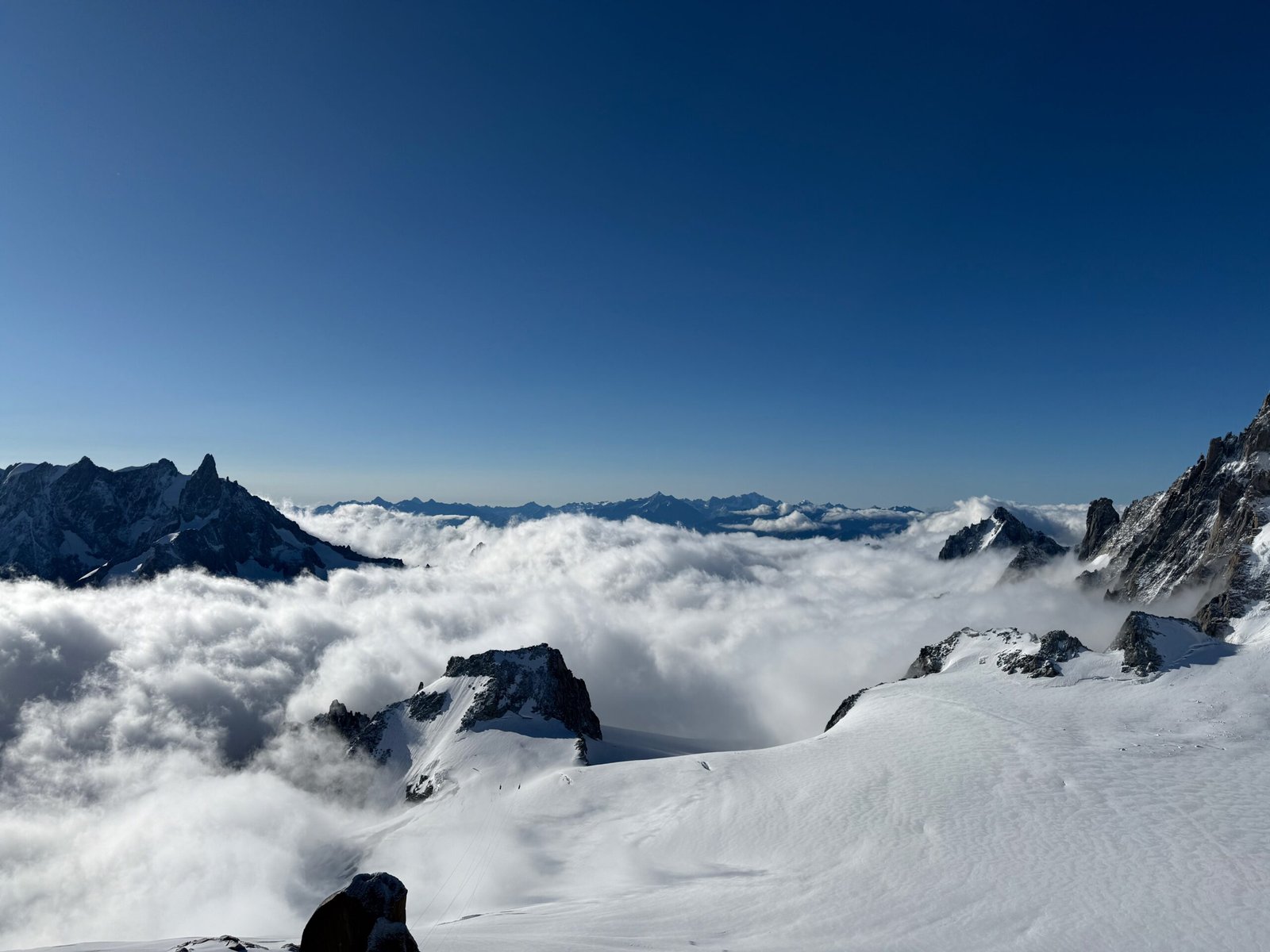
So when you look at the castle’s pale walls, you’re really seeing the compressed remains of an ancient coral reef – the fossilized architecture of a vanished ocean turned to stone, then lifted by tectonic power and sculpted by ice, before finally being crowned by human imagination. It’s hard to imagine a more poetic meeting of art and geology.
4 You Might Also Like:
5 A King’s Dream in Stone
King Ludwig II of Bavaria envisioned Neuschwanstein not as a fortress, but as an escape – a monument to myth, music, and solitude. Inspired by the operas of Richard Wagner, he imagined a castle where legend could live again. Construction began in 1869, but Ludwig would never see it finished. He died mysteriously in 1886, leaving behind an unfinished masterpiece that feels frozen somewhere between dream and reality.

Standing before its walls, I couldn’t help but think how deeply Ludwig’s fantasy is intertwined with nature’s own. The same Earth that once nurtured coral under tropical waves later lifted that reef into the sky – and centuries later, a king shaped it into a palace of imagination.
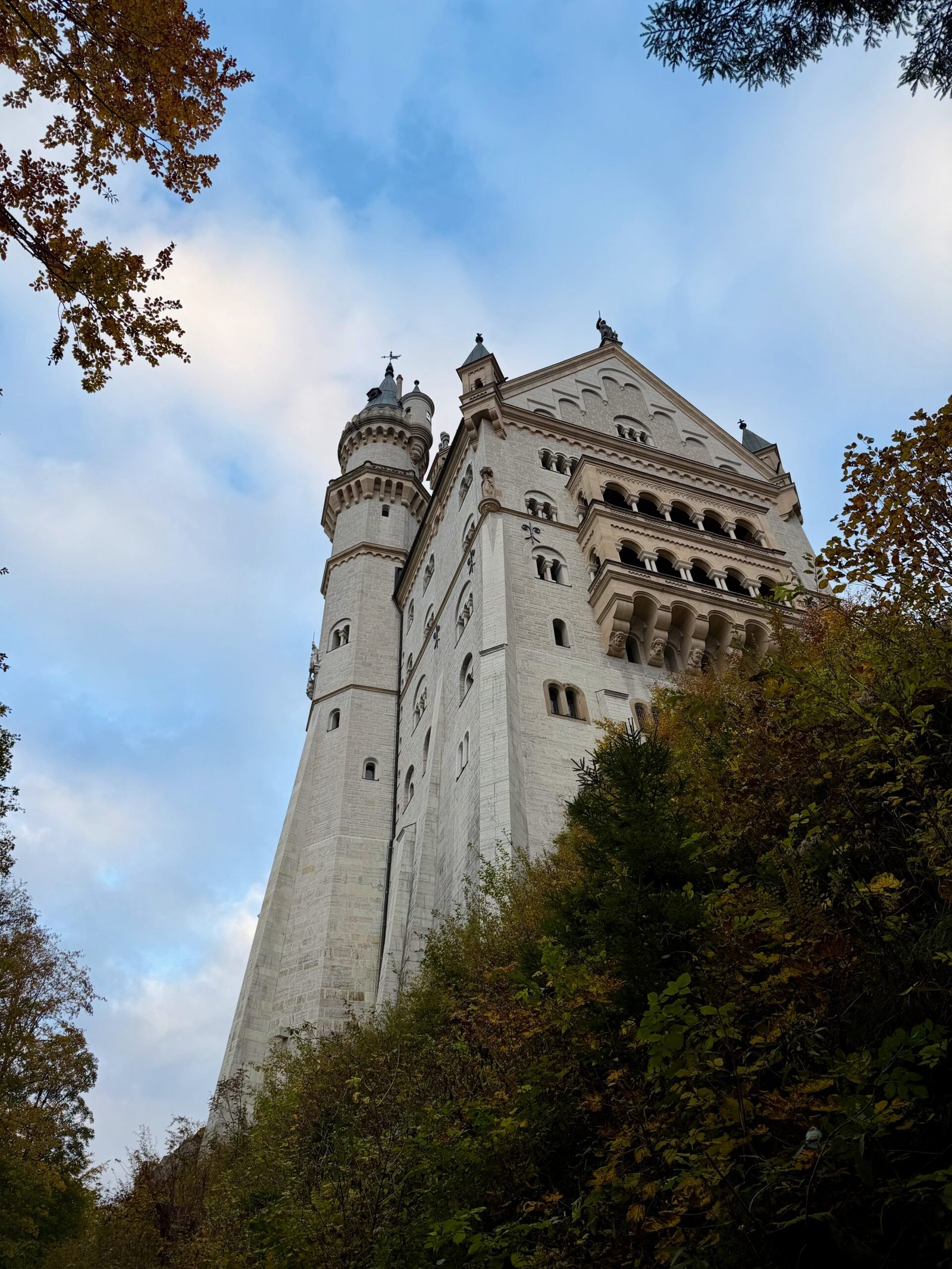
Neuschwanstein isn’t just a king’s creation – it’s the product of deep time, built upon a landscape hundreds of millions of years in the making.
6 The View from Marienbrücke
The trail continues past the castle to Marienbrücke, a slender bridge spanning a deep gorge. The view from here is the one everyone knows: the castle rising above forests ablaze with autumn colour, the snow-dusted Alps framing the horizon. But when you know the story beneath it, that view feels different.
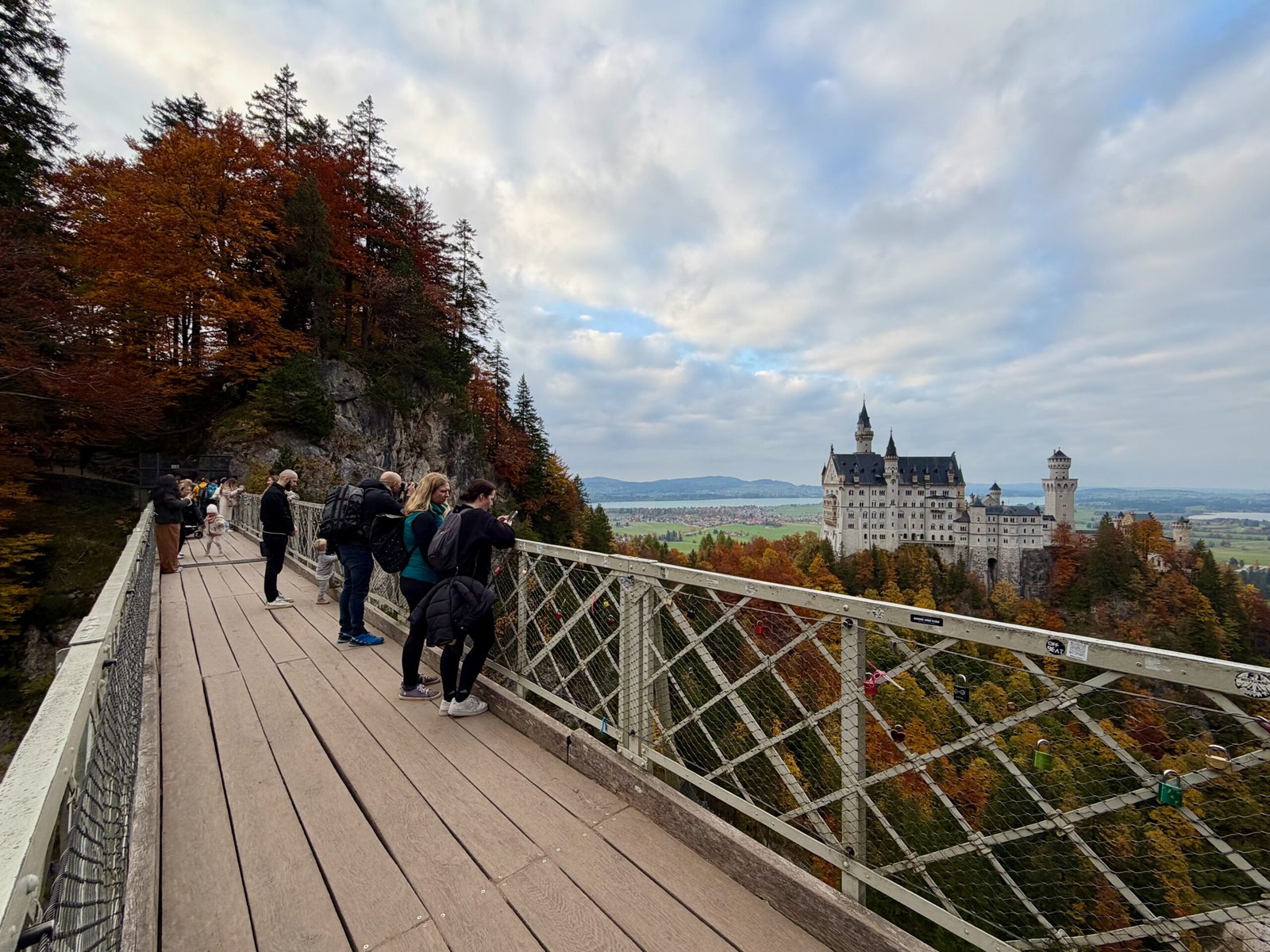
You realize you’re looking at layers of time – Jurassic seas hardened into mountain stone, continents colliding to raise the Alps, Ice Age glaciers carving valleys, and human imagination crowning it all. The wind rushes up from the gorge carrying the scent of pine and the sound of waterfalls, and for a moment, it feels as if the mountains themselves are breathing.

7 Practical Tips for Visiting Neuschwanstein Castle
For those planning their own visit to Neuschwanstein, a few practical details can make the experience far smoother and help you enjoy the journey as much as the destination.
- Getting There: From Munich Hauptbahnhof, take the train to Füssen (≈ 3 hrs), then bus 73 or 78 to Hohenschwangau.
- Tickets: Book ahead at neuschwanstein.de, as tours often sell out, especially during the summer.
- Best Photo Spot: Marienbrücke viewpoint, which is the classic fairytale view, best in early afternoon light.
- When to Visit: October for autumn colours, winter for snow-dusted magic, or spring for quiet trails and clear skies.
- Footwear: Wear sturdy shoes, as the path can be steep and slick after rain or frost.
8 Pro Tips for Science Travellers
For fellow science-minded travellers, these small observations can turn a visit to Neuschwanstein Castle into more than a sightseeing stop, as they reveal the geological story beneath the fairytale.
- Look Closely at the Limestone: Along the hiking trail, outcrops of Jurassic limestone occasionally reveal subtle fossil textures – tiny shells and marine patterns that hint at the ancient tropical sea that once covered Bavaria.
- Bring a Hand Lens: Even small rock fragments sparkle with marine microfossils when viewed up close – a pocket-sized window into the Jurassic ocean that once covered this region.
- Explore the Füssen Heritage Museum: Their exhibits on Alpine geology and glacial history add context to what you see in the landscape around Neuschwanstein.
- Study the Geology Map: Download a Bavarian Geological Survey map to see how the castle’s limestone ridge fits within the Northern Limestone Alps – part of a vast ancient reef system uplifted by tectonic forces.
- Observe Forggensee from Above: On clear days, look down toward the lake, as its broad basin traces where Ice Age glaciers once carved through the valley below the castle.
9 Frequently Asked Questions
Curious about the science and history behind Neuschwanstein Castle? Here are a few quick answers that add deeper context to its story of geology, imagination, and time.
Was Neuschwanstein Castle really built from coral?
Yes. The limestone used in its construction formed about 200 million years ago from the remains of coral reefs and marine sediments that once covered this part of Bavaria. In essence, the castle was built from the fossils of an ancient ocean.
How did the Alps form around Neuschwanstein?
The Bavarian Alps rose when the African and Eurasian tectonic plates collided roughly 30 million years ago. This immense pressure folded and lifted ancient seafloor layers into the peaks and valleys we see today.
Why did King Ludwig II build Neuschwanstein?
King Ludwig II envisioned Neuschwanstein as a private refuge inspired by medieval legends and the operas of Richard Wagner. It was less a fortress and more a dreamscape – a place where art, solitude, and imagination could live in stone.
Is Neuschwanstein Castle finished inside?
No. Construction stopped after Ludwig’s death in 1886, leaving much of the interior incomplete. Only about one-third of the planned rooms were ever finished, giving the castle a haunting beauty that mirrors its creator’s unfinished dream.
What geological features can visitors see near the castle?
Along the hiking trail, you can spot outcrops of Jurassic limestone – rock that once formed on a tropical seafloor, occasionally showing fossil textures or fragments. Below, the broad valley and Forggensee mark the path of Ice Age glaciers, while the Pöllat Gorge cuts dramatically through steep limestone cliffs. Together, they reveal the powerful natural forces that shaped this landscape long before the castle was built.
10 Reflections on the Descent
As I descended the path back toward Füssen, the evening light caught the limestone cliffs in the most mysterious way. I kept glancing back at the castle glowing against the peaks, thinking how everything – from the coral polyps of that ancient sea to Ludwig’s restless imagination, had conspired to create this remarkable place.

We call it a fairytale castle, but its foundations tell a truer, deeper story – one written not by architects alone, but by oceans, continents, and time itself.
That’s the beauty of travel for me: discovering how the world’s wonders, no matter how human they seem, are always rooted in the vast creativity of the Earth.
Some links in this story are affiliate links. If you choose to buy through them, Curious Don may earn a small commission – at no extra cost to you. It helps support more science travel stories like this.



